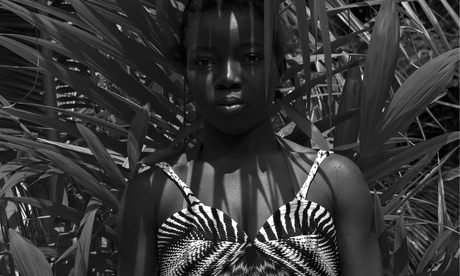
Known primarily for the vibrant colour tones and the way she shoots the human figure – all angles and curves as if a mere prop for her fierce formal imagination – Viviane Sassen is one of the few true innovators in contemporary fashion photography. Of late, though, she has been devoting more time to personal projects. As she writes in a short essay for this book, she travelled to the rainforest village of Pikin Slee in Suriname – formerly Dutch Guiana – in 2012 in search of "a simpler kind of photography".
Gone is the elaborate staging and, to a surprising degree, the bold colours; in their place, a simpler way of looking at an isolated settlement and its people. The Saramaka tribe are descendants of Maroons who fled from slave plantations in the 18th century. Initially, Sassen, who was born and lives in Amsterdam but spent her childhood in Kenya, was drawn to their traditional way of life in a place of "overwhelming nature". Over time, she became intrigued by "the strange lines of faith that tied together my own history and theirs".
Pikin Slee is a more understated book than previous monographs such as Flamboya and Parasomnia, their titles alone suggesting her often hallucinatory merging of documentary and fine art photography. She is still drawn, though, to the heightened otherness of the everyday, which is everywhere in Pikin Slee: a woman's striped dress that has the searing optical intensity of a Bridget Riley painting; a single white saucepan in a sea of darkness that resembles a composition by the painter William Scott; circles of freshly baked flatbreads drying on a tin rooftop in the sun.
For all her embrace of simplicity, Sassen remains a formalist at heart, and the arresting power of her images often depends on the abstraction of a few objects – cooking utensils, basins, fabrics – from their everyday uses. A black basin teeming with water looks like a container of bubbling oil or tar; a human figure looks ghostly behind a swath of light-blue cloth. Mostly, though, she simply observes – and frames – the things that catch her eye and imbues them with a surprising geometry. Some of the more abstract forms recall Edward Weston at his most experimental in their play of light and shadow, but this is unmistakably a Viviane Sassen book, albeit a more muted and considered one. She has a visual signature as strong as anyone working in photography today.

